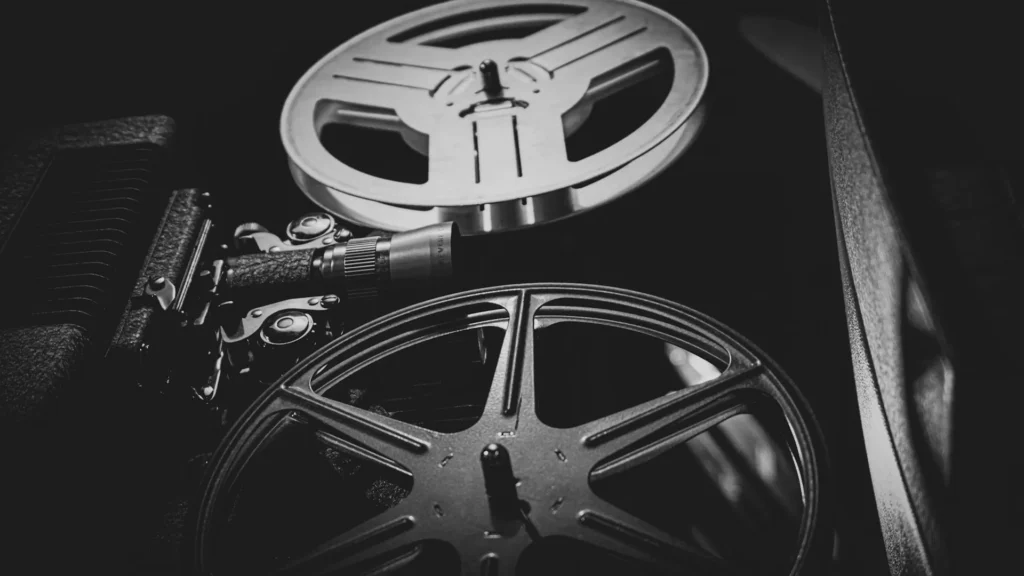
Cinema has long been an integral part of human experience, shaping our perceptions of the world, our identities, and our emotions. The journey from childhood movie-watching to a deeper cultural appreciation of film is one of both personal and intellectual growth. As children, we often watch movies for entertainment, for escape, or for comfort our choices influenced by family, friends, and mainstream media. However, as we mature, we begin to see movies as more than just stories; they become windows into history, art, philosophy, and the human condition. This transition moving from watching movies for life to watching movies for culture not just a change in preference but an evolution of our worldview.
Here we explore this transformation, examining how people’s relationship with movies evolves, how cinema educates and enlightens us, and how cultural awareness influences the way we interpret film. It delves into the role of nostalgia, artistic appreciation, and critical engagement in shaping our movie-watching habits.
The Innocence of Early Movie-Watching
For most people, the earliest experiences of cinema are rooted in pure enjoyment. Children watch movies to laugh, to dream, to feel safe, or to engage with their favorite characters. Animated films, adventure stories, and feel-good comedies dominate this stage. Disney, Pixar, DreamWorks, and Studio Ghibli provide a foundation for imagination, presenting narratives that are accessible, moralistic, and visually enchanting.
At this stage, movies serve as companions to personal emotions. We watch them to feel something joy, excitement, or comfort in the midst of childhood uncertainties. The significance of storytelling at this phase is often subconscious. We absorb messages about heroism, friendship, family, and perseverance, but we do not yet engage with these themes on a deeper level.
Movies also shape our earliest understanding of storytelling. Even in the simplest narratives, we begin to recognize structure heroes, conflicts, resolutions without necessarily analyzing their construction. Film at this stage is about feeling, not thinking. It is about immersing ourselves in characters and their journeys, allowing them to become part of our memories.
The Adolescent Shift: Awareness and Identification
As we enter adolescence, our movie choices expand, and so does our emotional engagement with film. This is the phase where many of us develop an affinity for genres or franchises that feel personal. Teen comedies, action-packed blockbusters, romantic dramas, and fantasy sagas often dominate, reflecting our desires, insecurities, and aspirations.
Movies take on new meaning in adolescence because we begin to identify with characters on a personal level. Coming-of-age films, in particular, resonate deeply, portraying the struggles of self-discovery, friendships, and first loves. Films like The Perks of Being a Wallflower (2012), Lady Bird (2017), or classics like The Breakfast Club (1985) become reflections of our own experiences, providing reassurance that we are not alone in our growing pains.
At the same time, adolescents start to appreciate movies for more than just entertainment. Some begin exploring films that challenge their perspectives dystopian narratives like The Matrix (1999), socially aware dramas like Dead Poets Society (1989), or philosophical sci-fi like Inception (2010). The transition from passive viewing to active engagement begins, though often unconsciously.
At this stage, movies still serve personal needs. They offer escape from academic stress, family conflicts, or social anxieties. They help form identity, shaping musical tastes, fashion sense, and even personality traits. However, critical thinking about film is still emerging. We may start noticing cinematography, dialogue, and performances, but our analysis remains instinctive rather than structured.
The Cultural Awakening: Movies as Art and Social Commentary
The true shift from movies for life to movies for culture we start to engage with cinema intellectually, historically, and artistically. This transition often happens in late adolescence or early adulthood, when we realize that movies are not just entertainment but cultural artifacts that reflect society, politics, and philosophy.
At this point, we become interested in film history. We explore classic cinema not just for its storytelling but for its artistic significance. Watching black-and-white films, silent cinema, foreign films, and indie productions becomes less of an academic exercise and more of a pursuit of understanding. Directors like Akira Kurosawa, Ingmar Bergman, Federico Fellini, and Andrei Tarkovsky enter the picture, broadening our appreciation of cinematic craftsmanship.
Additionally, we begin to see how movies serve as cultural mirrors. We engage with social critiques in films like Parasite (2019), Do the Right Thing (1989), or Schindler’s List (1993). We appreciate symbolism, allegory, and metaphor in films like 2001: A Space Odyssey (1968) or Pan’s Labyrinth (2006). We watch documentaries not just to learn but to challenge our beliefs.
This stage also marks a shift in how we judge films. No longer do we evaluate movies solely based on how much we enjoy them. Instead, we consider their technical aspects cinematography, editing, screenplay, sound design, and performance. We recognize that a movie can be uncomfortable or disturbing but still be great. Films like Requiem for a Dream (2000) or Come and See (1985) are not fun the traditional sense, but they are unforgettable in their impression.
The Role of Nostalgia in Movie Appreciation
Even as we grow to appreciate film on a deeper level, nostalgia plays a crucial role in our cinematic journey. The movies we loved in childhood and adolescence remain significant, not just for sentimental reasons but because they shaped our understanding of storytelling.
Rewatching childhood favorites as adults often leads to new interpretations. A film like The Lion King (1994) may have seemed like a simple adventure story as a child, but upon rewatching, we notice its Shakespearean influences. A film like Toy Story (1995) becomes more poignant as we age, reflecting themes of change and loss.
This nostalgic appreciation is not a step backward but an essential part of our film journey. It allows us to see how our perspectives have evolved while still valuing the emotional impact of those early movies. It also reminds us that all film, whether high art or mainstream entertainment, has a place in cultural discourse.
The Ultimate Realization: Movies as a Shared Human Experience
The final stage of cinematic appreciation is understanding that movies, at their core, are a universal human experience. While we may develop personal favorites or lean toward certain genres, we also acknowledge that cinema is a vast, ever-expanding medium that speaks to people differently.
This realization often leads to exploring international cinema. Watching films from different countries, cultures, and languages broadens our perspectives, helping us understand global narratives beyond our own. We begin to appreciate the unique storytelling styles of filmmakers like Bong Joon-ho, Abbas Kiarostami, Chlo Zhao, or Satyajit Ray.
We also come to understand that cinema is not about hierarchy it is not about good vs.bad taste but about how film resonates with individuals. A Hollywood blockbuster can be just as valid as an arthouse masterpiece, depending on its purpose and impression. A Marvel movie might provide joy and spectacle, while a slow-burning European drama might provoke deep thought both experiences are valuable.
Ultimately, we realize that movies are more than just stories on a screen. They are reflections of culture, art, history, and emotion. They teach us about others, but they also teach us about ourselves.
The journey from watching movies for life to watching movies for culture is one of growth, both personal and intellectual. We begin with pure enjoyment, transition through self-identification, and eventually arrive at critical appreciation. Through this process, we develop an understanding of cinema as both art and social commentary, engaging with film on multiple levels.
Yet, even as we evolve in our movie-watching habits, we never completely abandon the emotions that drew us to film in the first place. Nostalgia, entertainment, and cultural awareness all coexist in our cinematic experiences, making film one of the most powerful mediums of human connection.
Growing up in the dark, watching stories flicker across the screen, we are not just consuming entertainment we are participating in a lifelong dialogue with art, culture, and ourselves.
No comments yet.








